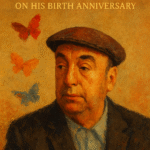Charles Dickens and Childhood: Time, Memory, and the Weight of Emotion
A Tale That Grew with Me
As a child, Charles Dickens’ stories opened up a world of candlelit streets, mysterious benefactors, and orphaned heroes. But as I grew older and studied literature, I found deeper meanings within those tales. They weren’t just stories. They were layered explorations of society, resilience, and above all, childhood as a shaping force—where time impresses both tenderness and trauma upon the self. This article reflects on Charles Dickens and childhood, showing how his works continue to reveal emotional truths about the fragility of youth and its lifelong echoes.
Charles Dickens: The Storyteller of the Common Child
Dickens was born in 1812 into a rapidly changing England. His early years were marked by hardship. At 12, he worked in a blacking factory after his father landed in debtors’ prison. That experience never left him—it became a recurring theme in his fiction.
Children in Dickens’ novels aren’t passive figures. They are emotional and moral centers. Characters like Oliver Twist, Pip, and David Copperfield live with inner lives that feel painfully real. His portrayals go beyond sympathy. Dickens uses children to highlight how society fails its most vulnerable. The link between Charles Dickens and childhood begins here—in his unwavering focus on young lives shaped by injustice.
Time and Trauma: The Lingering Shadows of Youth
Dickens captured the fragility of time like few others. Childhood, in his works, often becomes the seedbed of future pain or hope. Take Pip in Great Expectations. His shame over humble origins begins in childhood and defines his adult choices. Similarly, David in David Copperfield must carry the burden of early abuse and abandonment.
Moments from childhood don’t vanish—they shape who we become. Miss Havisham in Great Expectations personifies this. Her entire adult life remains trapped in a single traumatic moment. Through her and others, Dickens shows how unresolved childhood pain continues to haunt adulthood.
Poverty and Innocence: Children at the Margins
In Oliver Twist, Dickens exposes the cruelty of workhouses and the exploitation of children. Despite this, Oliver remains innocent. He doesn’t grow bitter or morally compromised. In fact, many of Dickens’ child characters endure suffering without losing their core goodness.
This was deliberate. Dickens saw children as society’s moral compass. Their experiences in his novels were meant to stir conscience and compassion. Characters like Jo in Bleak House or Little Nell in The Old Curiosity Shop reveal the harsh realities of the time. Still, they also offer glimpses of purity and resilience.
Sentiment, Satire, and Subversion
While Dickens is known for his emotional storytelling, he balances sentiment with satire. Hard Times offers a sharp critique of fact-based education through Mr. Gradgrind, who robs children of imagination.
Many young characters resist adult control—sometimes through wit, sometimes through silence. Even voiceless figures like Smike in Nicholas Nickleby command deep empathy. In every case, Charles Dickens and childhood emerge as a powerful combination—one that critiques society while honoring the inner lives of children.
Why Dickens Still Matters
Reading Dickens today is more than literary nostalgia. His themes remain urgent. Neglect, inequality, and the psychological residue of childhood persist in modern society. His books remind us that childhood isn’t a distant memory. It’s a force that continues to shape thought, emotion, and identity.
For lifelong readers, Dickens grows with us. What thrilled us as children—mystery, drama, adventure—transforms into deeper insight as we age. We realize that Dickens didn’t just write about children. He wrote about what it means to carry our childhood through every phase of life.
Notable Works by Charles Dickens That Explore Childhood
- David Copperfield – A personal tale of growth, memory, and healing.
- Oliver Twist – Innocence in the face of cruelty and systemic neglect.
- Great Expectations – The lasting power of childhood shame and dreams.
- Hard Times – Satire of rigid education systems and their effects on youth.
- The Old Curiosity Shop – The emotional fragility of childhood and loss.
Conclusion: The Child Within Us All
To read Dickens is to reflect on ourselves. His stories don’t just entertain—they help us understand how time, memory, and pain shape us. Childhood isn’t something we leave behind. In Dickens’ world, it is the foundation of everything that follows. That’s why Charles Dickens and childhood continue to resonate, generation after generation.
Outbound Links:
Project Gutenberg: Charles Dickens Works
British Library: Charles Dickens
Also Read on Blogopine


